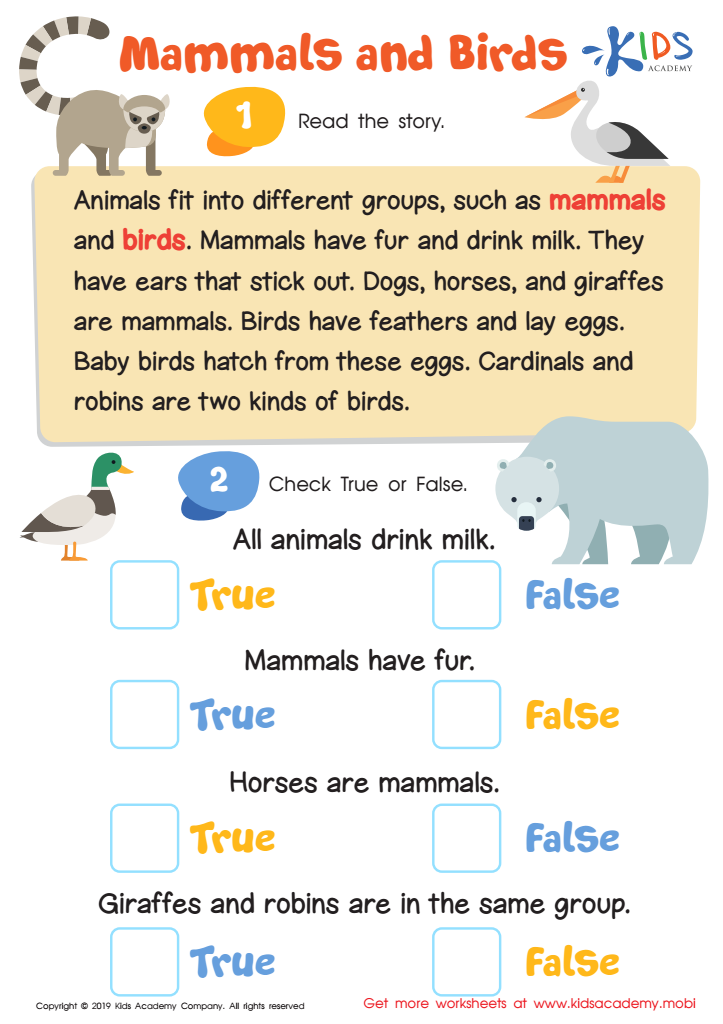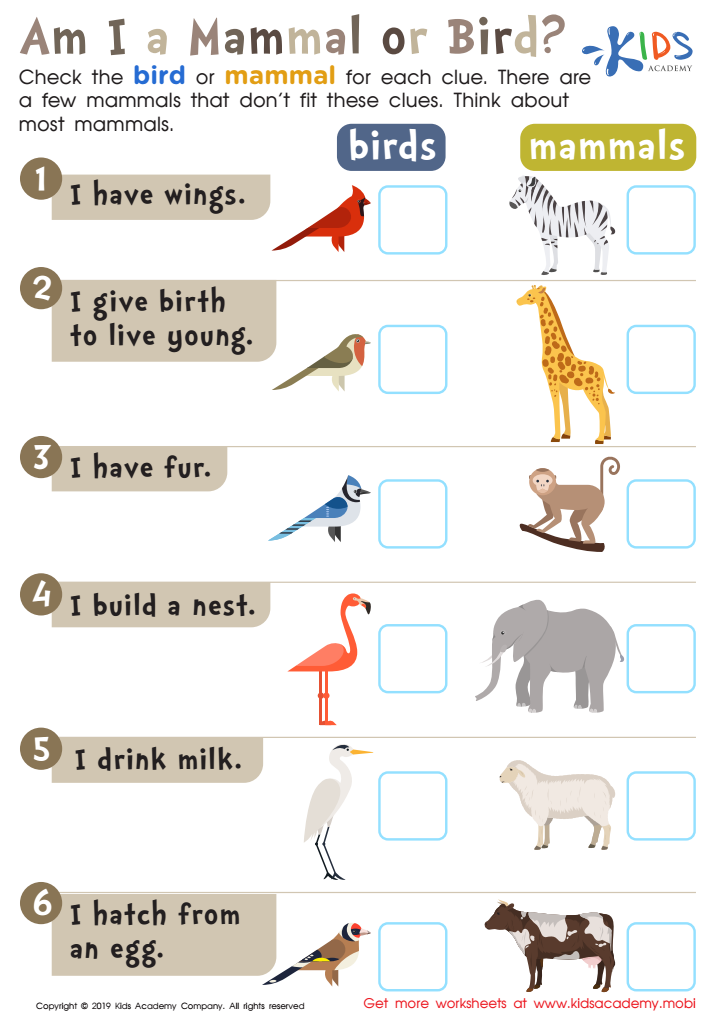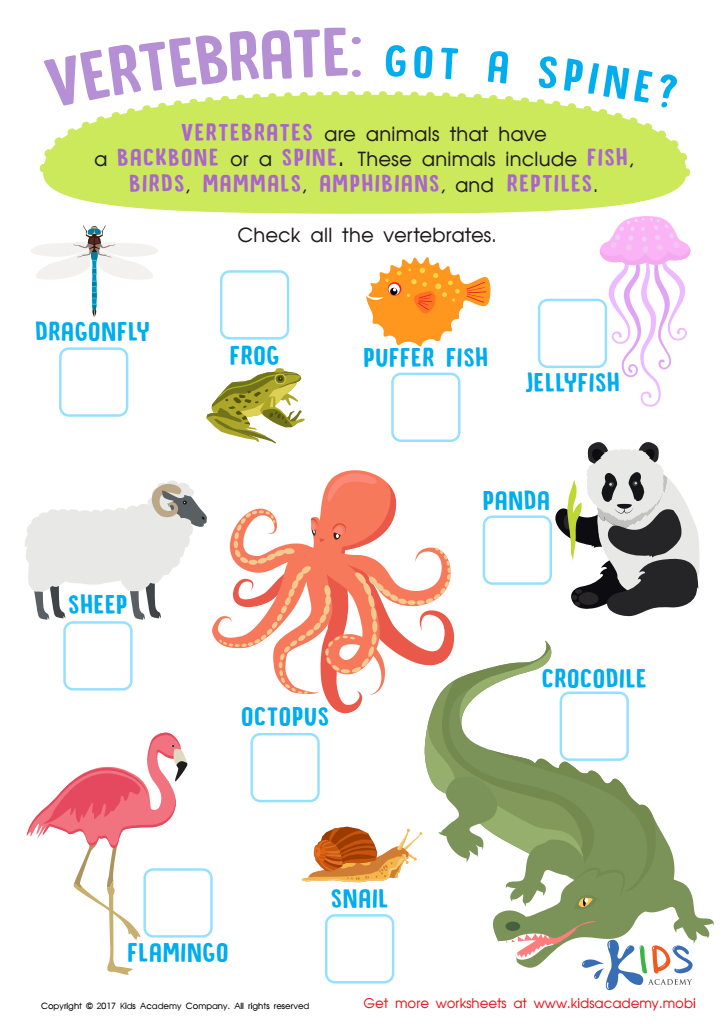Animal Classification Worksheets for 9-Year-Olds
3 filtered results
-
From - To
Discover our engaging Animal Classification Worksheets designed specifically for 9-year-olds! These educational resources help young learners explore the fascinating world of animals while developing critical thinking and observation skills. Our worksheets cover key concepts in animal classification, including mammals, birds, reptiles, amphibians, and fish, making it easy for kids to identify and categorize various species. Each worksheet is crafted to be fun and interactive, promoting hands-on learning through activities such as sorting, matching, and filling in the blanks. Ideal for classroom use or home learning, these worksheets inspire curiosity about nature and enhance essential skills in science. Start your adventure today!


Mammals and Birds Worksheet


Am I a Mammal or Bird? Worksheet


Vertebrates Animals Worksheet for 3rd Grade
Animal classification is an essential topic that engages nine-year-olds in understanding the natural world and igniting their curiosity. For parents and teachers, fostering this knowledge has several benefits. Firstly, it enhances critical thinking skills, as students learn to categorize animals based on shared characteristics, which promotes analytical reasoning. Recognizing the diversity of life encourages appreciation for ecosystems and the intricate relationships among species, teaching children the importance of biodiversity and conservation.
Furthermore, animal classification serves as a gateway to discussions about habitats, nutrition, and environmental challenges. It connects to various subjects, including science, geography, and language arts, enriching the curriculum and making learning more interdisciplinary and relevant. By engaging students in hands-on activities, like field trips to zoos or nature walks and creating classification projects, educators can cultivate teamwork and creativity.
Moreover, understanding animal classification fosters empathy and respect for living beings, encouraging a sense of responsibility toward wildlife and conservation efforts. This foundational knowledge can motivate young learners to pursue careers in science and environmental conservation. Ultimately, empowering children with knowledge about animal classification enriches their education and nurtures informed, compassionate future citizens who are aware of their role in protecting the planet.

 Assign to My Students
Assign to My Students




















